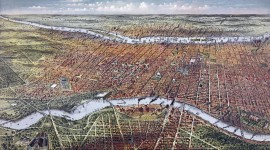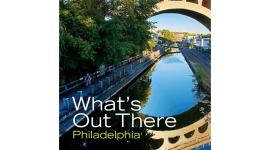Landscape Information
Located in the Colonial Germantown Historic District, this property served from 1690 to 1973 as the residence of nine generations of a family prominent in Philadelphia’s Quaker community. Between 1690 and 1734, a log cabin was built; later, a stone house was erected at the front of the property. The log cabin was replaced with another stone house and the whole was unified in 1773. The enlarged structure served as a hospital for British soldiers in 1777. Reuben and Jane Haines inherited the property in 1820 and commissioned architect William Strickland to rejuvenate the aging structure. Mrs. Haines, an avid gardener, developed the farm’s landscape, which was limited at that time to an orchard and an eighteenth-century kitchen garden with medicinal and edible plants. Between 1821 and 1827, she enhanced the productive gardens with additional fruiting trees and shrubs. To the site’s existing, Colonial-era plantings of roses, such as Pink Leda and Germantown Damask, she introduced newly available exotic and hybrid varieties. Haines also planted iris, hydrangea, and lilac, while adding boxwood parterres to the north lawn.
The 40-acre property was slowly subdivided over time. The 2.5-acre historic core was cared for by the Haines’ heirs until 1973, when they established the Wyck Charitable Trust to preserve and interpret the house and its gardens. In 2007, the landscape was rehabilitated. The site now serves as a house museum, urban farm, and market. Historic structures—including the house, outbuildings, and a greenhouse—are shaded by mature trees, while heirloom roses, medicinal plants, and fruit trees ornament the grounds. Wyck House was designated a National Historic Landmark and added to the National Register of Historic Places in 1971.

















